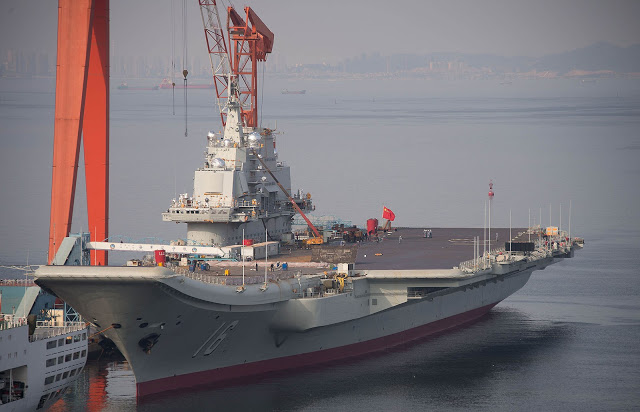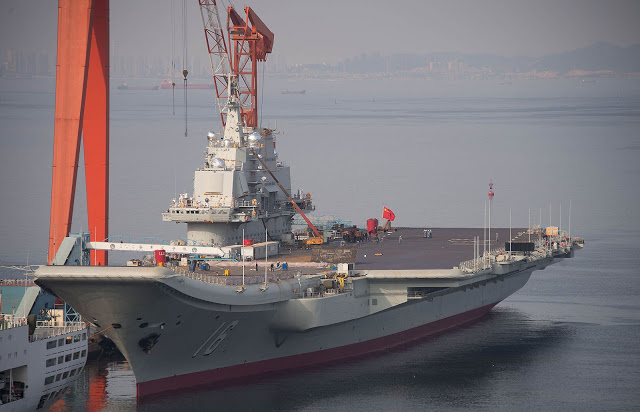Another clue that an indigenous carrier is under construction was the start of the serial production of the carrier-based J-15 jet fighter, which would be destined for the Liaoning and other carriers. IHS Jane’s reported last year that mass production of the fighter was gathering pace.
China currently dominates in the anti-ship missile field.
The 3,000 kilometer (1,800 mile) range DF-26 ballistic missile, as well as the 1,750 kilometer range DF-21D anti-ship ballistic missile. Both “carrier killers” were displayed during China’s Sept. 3 military parade in Beijing.
In the future, aircraft carriers may become less important than quieter submarines and more-sophisticated surface warships, both with long-range anti-ship missiles and support from land-based, precision missiles deployed by PLA Second Artillery Force, Davis said.
Doomed on Arrival
Henry J. Hendrix of the Center for a New American Security argues that, like the battleships which carriers were originally designed to support, carriers may now be too expensive and vulnerable. US aircraft carriers are doomed and so are the Chinese aircraft carriers in terms of an actual war with a relatively equal opponent. They are useful for projecting power and bullying vastly weaker opponents.
Currently China has the Liaoning which is a refitted aircraft carrier from the Ukraine
China’s new aircraft carrier will be much smaller than the U.S. Navy’s 100,000-ton Nimitz or Ford-class nuclear-powered carriers. The Chinese vessels will probably be smaller, conventionally-powered either by steam or diesel propulsion and probably will not have electromagnetic catapults.
The hull assembly continued through the summer. Imagery from 22 September shows a lengthened aft section and expanded bow. The hull is currently assessed to have a length of about 240 meters and a beam of about 35 meters. The incomplete bow suggests a length of at least 270 meters for the completed hull.
Given the incomplete nature of the upper decks, definitive identification of the Dalian hull as the first so-called ‘001A’ aircraft carrier is not possible. It is believed that the type 001A is about 55,000 to 67,500 tons. The tonnage depends upon which Russian design is being copied and modified. The new ship will use a conventional propulsion package, have the large, phased array radars already installed on the Liaoning‘s island structure, and also have 40 to 45 J-15 or Su-33 fighters.
The 60,000 ton Liaoning aircraft carrier is 270 meters long at the waterline
Airbus Defence and Space imagery shows an overview of Dalian shipyard in China. Source: CNES 2015, Distribution Airbus DS / 2015 IHS
Internet Expectations of what the Finished Type 001A will look like

Brian Wang is a Futurist Thought Leader and a popular Science blogger with 1 million readers per month. His blog Nextbigfuture.com is ranked #1 Science News Blog. It covers many disruptive technology and trends including Space, Robotics, Artificial Intelligence, Medicine, Anti-aging Biotechnology, and Nanotechnology.
Known for identifying cutting edge technologies, he is currently a Co-Founder of a startup and fundraiser for high potential early-stage companies. He is the Head of Research for Allocations for deep technology investments and an Angel Investor at Space Angels.
A frequent speaker at corporations, he has been a TEDx speaker, a Singularity University speaker and guest at numerous interviews for radio and podcasts. He is open to public speaking and advising engagements.





















